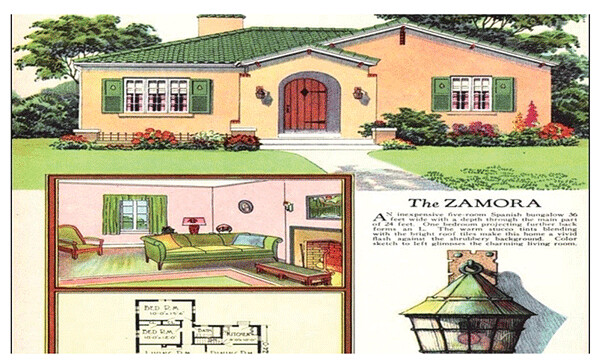Speaking houses

Quite young and through no effort on my part I began basic grasping of the language spoken by homes and neighborhoods. My parents’ Spanish Bungalow on land recently farmed in south side Chicago told a much different story from the urban triplexes with stairs creaking like alarm crows guarding halls smelling of cooked cabbage some relations called home and different again from my Uncle Len’s sign shop with business on the street; living area packed behind. In comparison my immediate family was fortunate, though I held grandpa Drabik’s duplex fortress superior for the massive front door I could not swing on my own until at least age ten. Before I was big enough all I could do was look at that door and wait for someone to open it for me. I loved going to my grandparents not because I’d be fussed over. The contrary, after grandmother’s two words of English, “Hallo Harry,” I’d be relatively ignored, browsing the endless bric-a-brac, though to annoy my mother grandpa fed me beer on the porch, setting my feet on a path I’d follow in adulthood.
I hope, already, you’ll sense some connection between a brick, mortar, and wood exterior with the variety of lives taking place inside. What and where of our homes is wedded to who and what of our lives. As much as we’re able people join with their homes. In real estate I tell people a decision on a house is similar to deciding about a mate. Union of home and owner is personal. The individual who embraces an upper floor condo is not the one who’ll fall in love with five acres of hobby farm. Houses and people bear individual tales with more content and more importance than merely how much the wood frame cost or where occupants were schooled.
My current split entry on the Range has a story written deep into its structure by time and people. Originally built for the Superintendent (or captain, as in captain of industry) of a nearby mine it was a step up from the close by homes of miners. The positioning of these homes is part of the story, one from a time when boss and worker lived close (in this case very close) to the workplace. The old days of assumed exploitation were, I think, diluted by proximity. From home the boss could see and walk to the mine offices, steam plant, and shops. The captain’s house jolted and shifted (marks still visible) from fifty years of blasting in the mine and was dusted inside and out same as the homes of workers who knew better than hang wet laundry on a day rock was to be shot at the St. James.
I’m not suggesting that a time when bosses and workers lived nearer to each other and their work (the Twin Ports has some remnants of this if you look) was wonderful or special. Instead think of these past indicators as more humanly involved and complex than first impressions or social stereotyping would tell us. Then as now, connections and divisions existed between people in their differing roles. The captain’s house had a cook’s room with separate entry signifying the split between servant and owner, and is that fundamentally much different from the person who uses their Prius or Lexus to mark their distinctions? If different it’s not by leagues. The human stories, so far as we are able to know them, humanity’s ground zero where family, work, and social context meet the way of vegetables and meat in a soup pot. A house, the people who have lived in it, their work, social interactions, their places of worship or their taverns all have roles in a picture as difficult to understand as it is unwise to judge.
The first house I bought had a frame of dovetail log of a size suited to a non-mechanized builder. It was small with many flaws that told how people made do, improvised, made improvements, and carried out their lives. Another of the old places I rehabbed was visited by a retiree and his wife. He told of boyhood summers spent helping out on the property for the owners who hired his mother as cook and kept her in the cities to look after their house. His visit was cordial and informative, especially when he confided never before having sat at the table at the fireplace. In his early teen the boy slept in an adjacent bunk house. Up early he’d carry water, bring in wood, carry out ashes, and etc. until given a plate of food to carry to the bunkroom. Chores out of the way he could make sandwiches and head off to the river to fish (trout for the evening meal), swim, and visit others on his way back.
At one time I held social discrimination to be a major part of the story. The cook’s son was not suited to sit at the family table. There is that side of it, but would a fourteen year old with his own aims in life be all that keen having to mind his manners and listen politely to gab about the neighbor’s investments in a silver mine or social gossip? I came around eventually to see some social separation as less awful than I’d assumed. Was it so awful excluding a boy from things that weren’t of interest? The answer would be yes, but only if he was interested. Not the case, though, so no more socially hostile or classist than when I step away from discussion of which casino pays out or has the best brunch.
Houses and neighborhoods have things to tell, but there’s dialog too. The hewn log house taught me to make latches from scrap material. Of course, easier to go to the hardware and buy, but I think the Chinese have other things to do and won’t mind I’ve made woodshed door catches from odds and ends or that the hinges were from discarded doors. The story in a latch, a flue, a hallway, or style are there needing to be heard before empty improvement silences their voice.
